CS61C | lecture6
主流 ISA
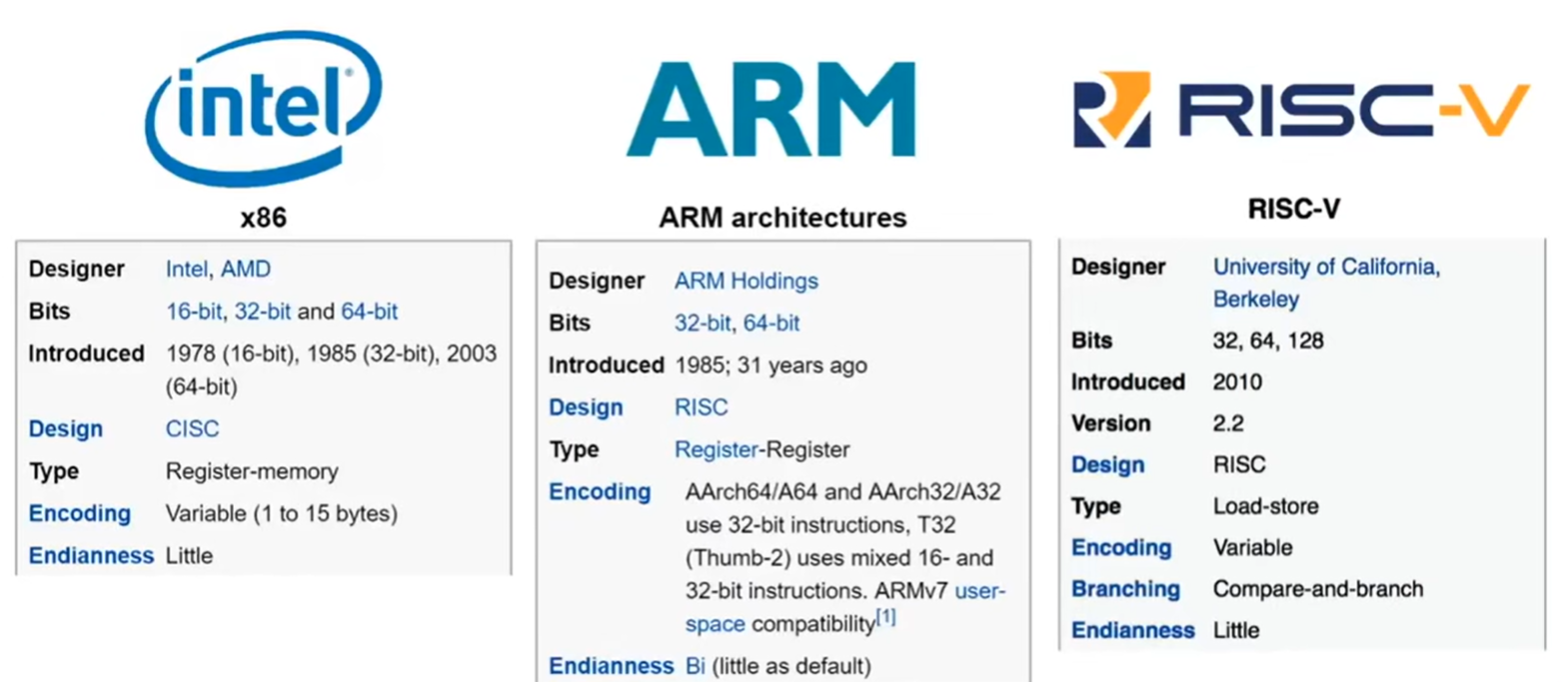
Register
汇编语言没有变量。它用寄存器来存储值。
寄存器是固定大小的小内存(32 位或者 64 位)。可以进行读取和写入,但是有数量限制,它们很快并且耗电少。
Registers vs. Memory
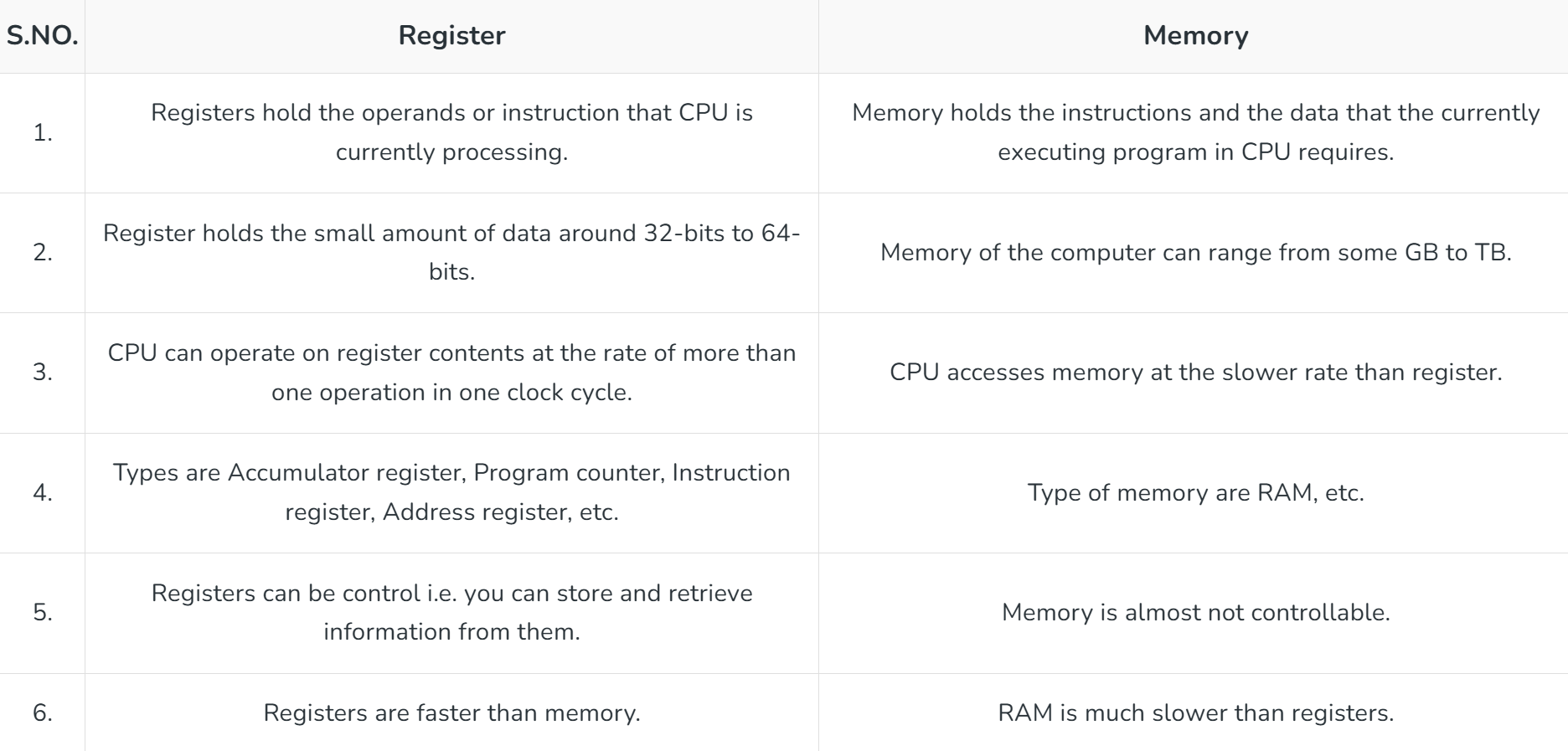
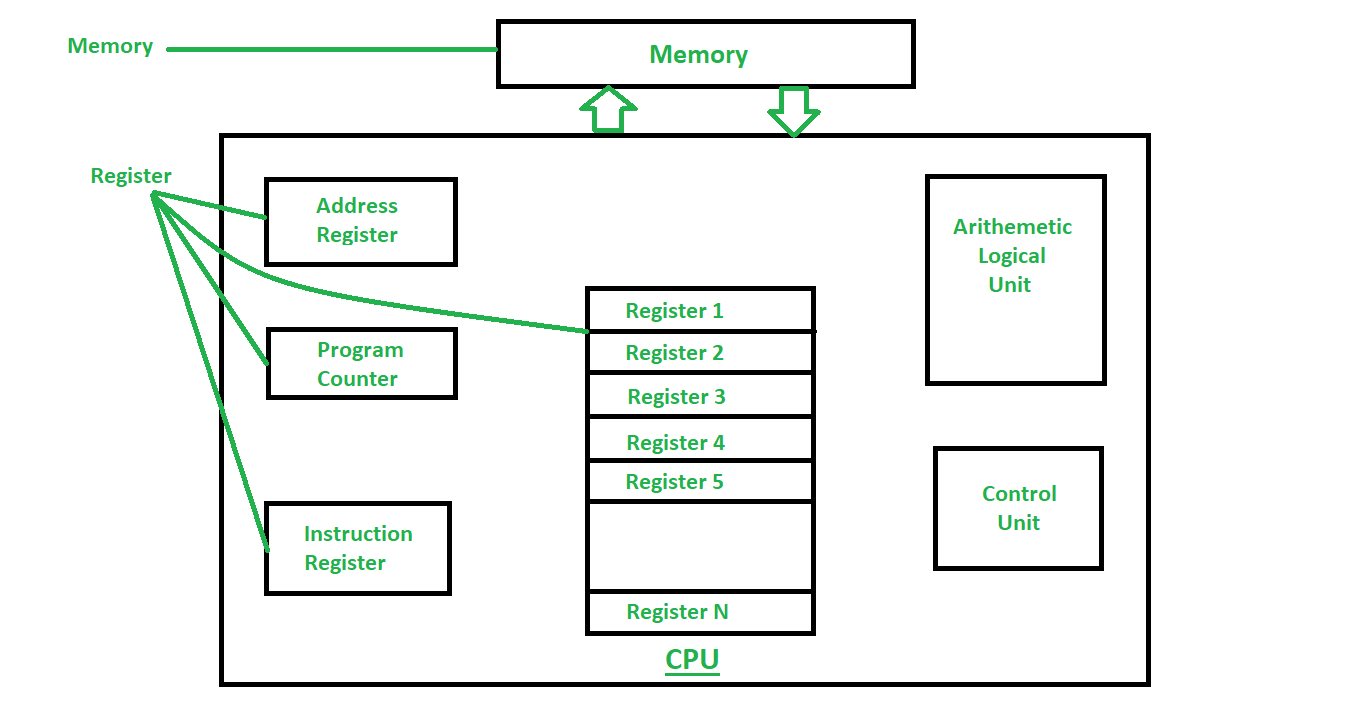
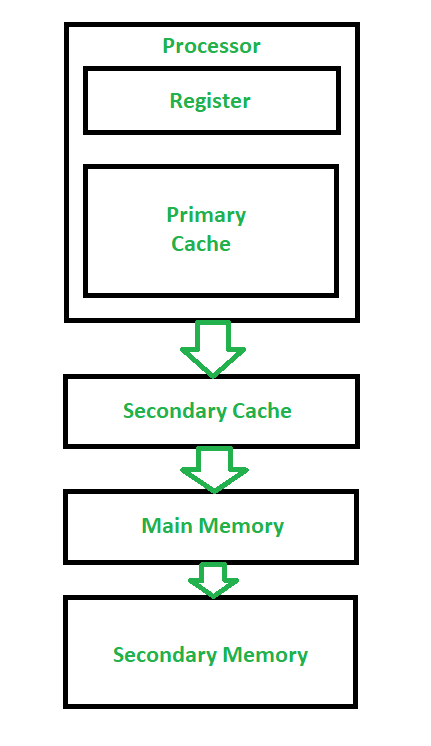
What if more variables than registers?
如果变量多于寄存器数量,我们选择将最常用的变量存储到寄存器中,然后将其余的存储到内存中。(称为 spilling to memory)
Why are not all variables in memory?
寄存器比内存快 100-500 倍。
Locality Memory Hierarchy
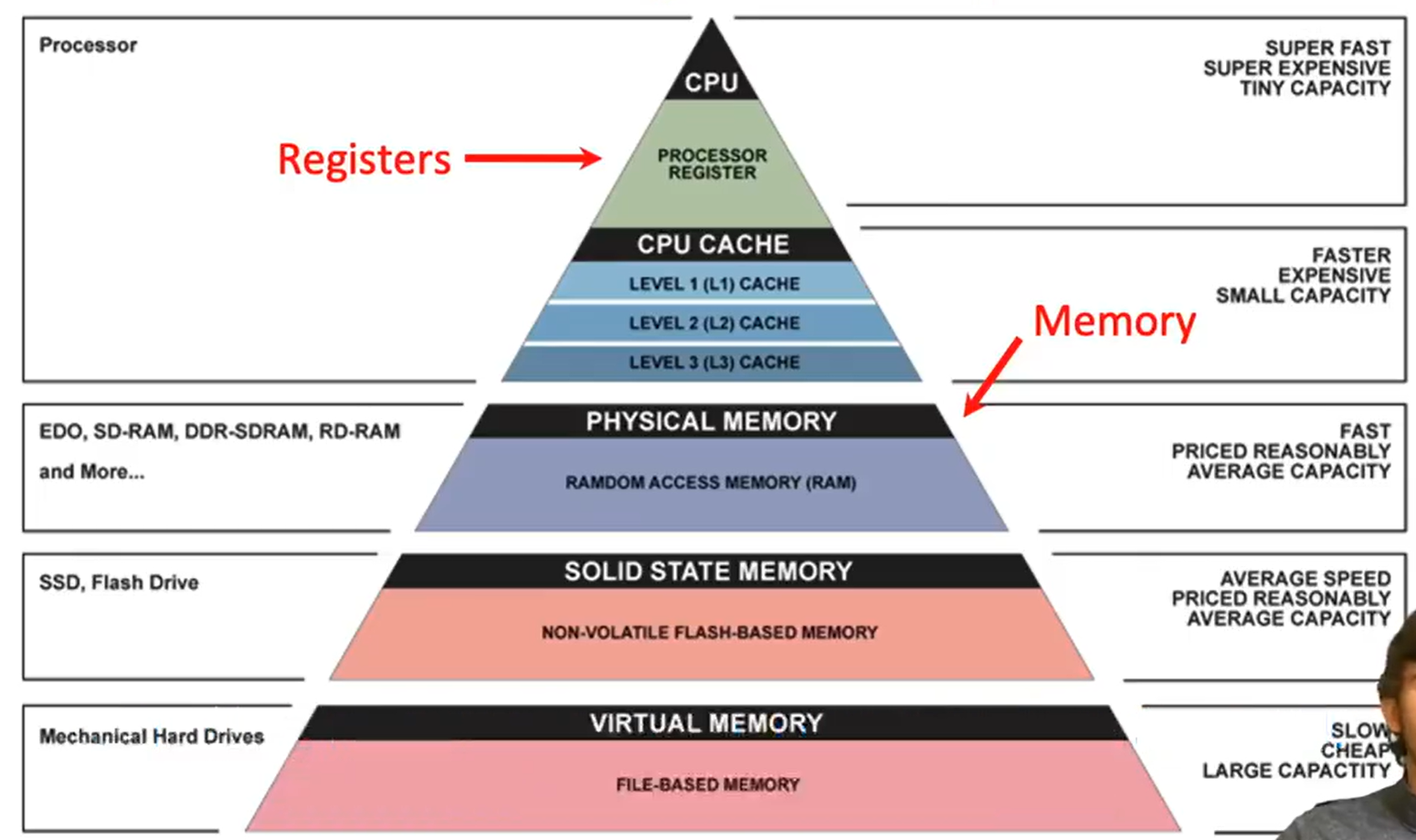
RISCV
RISC V 有 32 个寄存器,从 x0 到 x31。
每个寄存器都是 32 bits wide and holds a word(a fixed size piece of data that handles as a unit by the instruction set or hardware of the processor, a word is defined as the size of a CPU’s registers).
s 开头的寄存器称为 safe registers,它们用来保存编程变量。
t 开头的寄存器持有临时变量。
The Zero Register
x0(zero) 永远有值 0 并且不能被改变!任何对 x0 寄存器的写入操作都无效。
Registers in a Computer
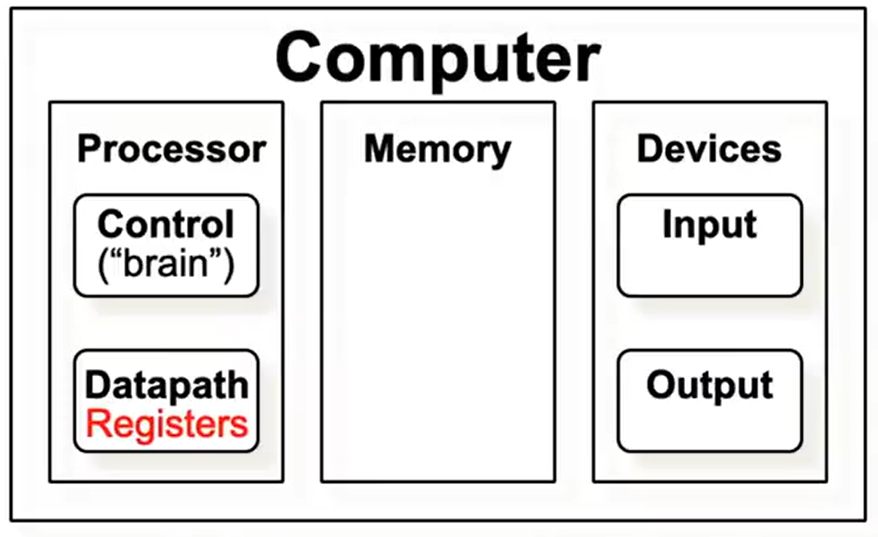
RISCV Instructions
1 | op dst, src1, src2 |
op: operation name
dst: register getting result
src1: first register for operation
src2: second register for operation
汇编指令和 C 相关(=, +, -, *, /, \&, |, etc)
1 | main: add t0, x0, x0 |
Integer Addition(add)
在 C 语言中:
1 | a = b + c; |
在 RISCV 中:
1 | add s1, s2, s3 # s1 = a |
Integer Subtraction(sub)
在 C 语言中:
1 | a = b - c; |
在 RISCV 中:
1 | sub s1, s2, s3 # s1 = a, s2 = b, s3 = c |
RISCV Instructions Example
假设 a -> s0, b -> s1, c -> s2, d -> s3, e -> s4。将 a = (b + c) - (d + e) 转换为 RISCV。其中,t1 和 t2 是存储临时变量的寄存器。
1 | add t1, s1, s2 # t1 = b + c |
Immediates
Immediates: Numerical constants
1 | opi dst, src, imm |
操作的名称结尾加个 ‘i’。
Immediates 可以达到 12 bits
1 | addi s1, s2, 5 # a = b + 5 |
假设 a -> s0, b -> s1, 将 a = (5 + b) - 3; 转换为 RISCV
1 | addi t1, s1, 5 # t1 = 5 + b |
Data Transfer
Data Transfer instructions are between registers(Datapath) and Memory. Allow us to fetch and store operands in memory.
1 | memop reg, off(bAddr) |
- memop: operation name(“operator”)
- reg: register for operation source or destination
- bAddr: register with pointer to memory(“base address”)
- off: address offset(immediate) in bytes(“offset”)
Access memory at address $bAddr + off$Memory is Byte-Addressed
不同系统下 word 和 Byte 和 bit 的关系
| 系统 | 字 | 字节 | 位 |
|---|---|---|---|
| 16位 | 1 word | 2 Bytes | 16 bits |
| 32位 | 1 word | 4 Bytes | 32 bits |
| 64位 | 1 word | 8 Bytes | 64 bits |
| Memory addresses 由 byte 而不是 word 来索引 | |||
| Word addresses 每个相隔 4 Bytes(32 位系统下) | |||
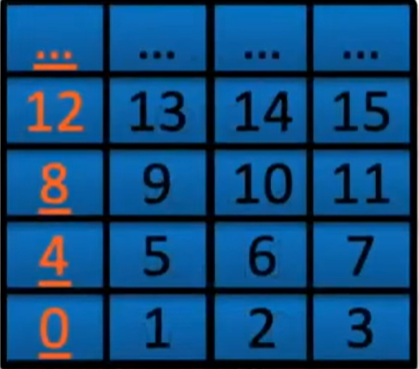 |
Data Transfer Instructions
Load Word(lw)
-Takes data at address $bAddr + off$ FROM memory and places it into reg.
Store Word(sw)
-Takes data in reg and stores it TO memory at address $bAddr + off$
example
address of int array[] -> s3, value of b -> s2,
1 | array[10] = array[3] + b; |
转换成 RISCV
1 | lw t0, 12(s3) # t0 = A[3] |
Values can start off in memory
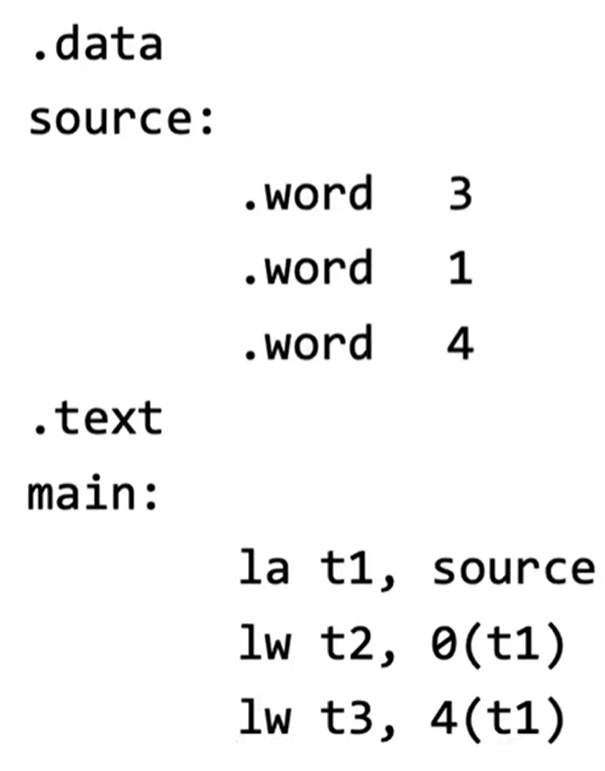
$.data$ 指定了数据的存储位置。
$.text$ 指定了代码的存储位置。
Endianness

RISC-V 是 Little Endian
Sign Extension
Sign Extend
Take the most-significant bit and copy it to the new bits
Zero/One Pad
Set the new bits with one/zero.
RSIC-V 是 Sign extend
Byte Instructions
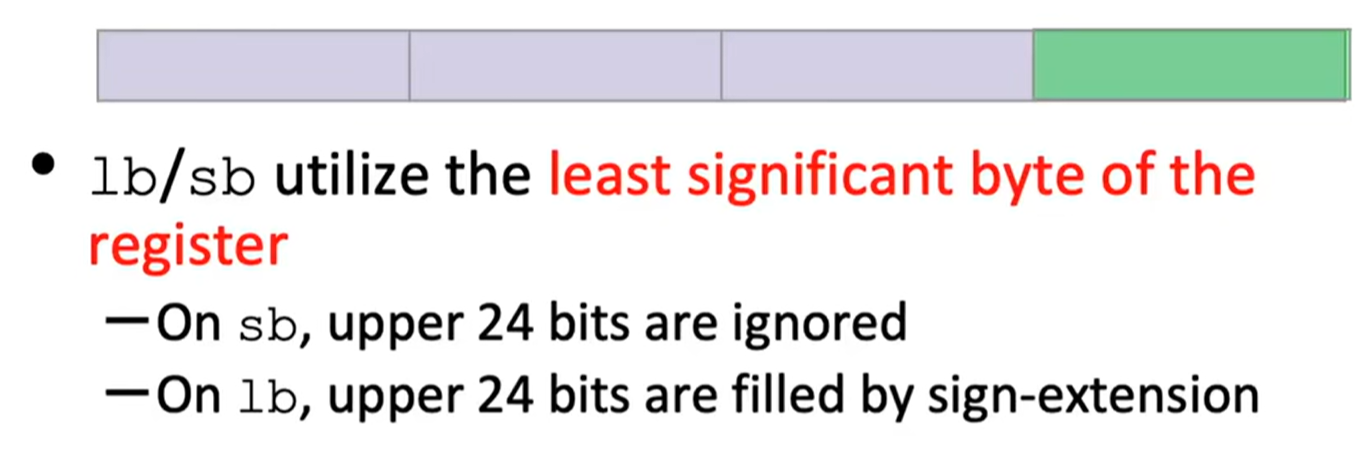
$s0 = 0x00000180$
1 | lb s1, 1(s0) # 获得 1 个字节,也就是 0x01,s1 = 0x00000001 |
Half-Word Instructions

Unsigned Instructions

意味着当加载指令时,用 0 进行填充而非 sign extending。
Data Transfer Greencard Explanation



Decision Making Instructions
Branch If Equal(beq)
If value in reg1 = value in reg2, go to label
Otherwise go to the next instruction
1 | beq reg1, reg2, label |
Branch If Not Equal(bne)\
If value in reg $\neq$ value in reg2, go to label
1 | bne reg1, reg2, label |
Jump(j)
Unconditional jump to label
1 | j label |
Branching On Conditions other than (Not) Equal
Branch Less Than(blt)
If value in reg1 < value in reg2, go to label
1 | blt reg1, reg2, label |
Branch Greater Than or Equal(bge)
If value in reg1 >= value in reg2, go to label
1 | bge reg1, reg2, label |
If-Else
C 语言代码:
1 | if(i == j) |
RISC-V 代码:
1 | # i -> s0, j -> s1 |
C 语言代码
1 | if(i < j) |
RISC-V 代码:
1 | # i -> s0, j -> s1 |
Instruction Addresses
指令作为数据存储在 memory 中并且有自己的地址。
Labels 会被转换为指令地址。
PC 会跟踪 CPU 当前执行的指令。
Control Flow Greencard Explanation

imm 的第 0 位是 0,来保证它是偶数,这样 PC 的值总是会半对齐。
Shifting Instructions
Logical shift:Add zeros as shift
Arithmetic shift: Sign-extend as you shift,只对右移有效。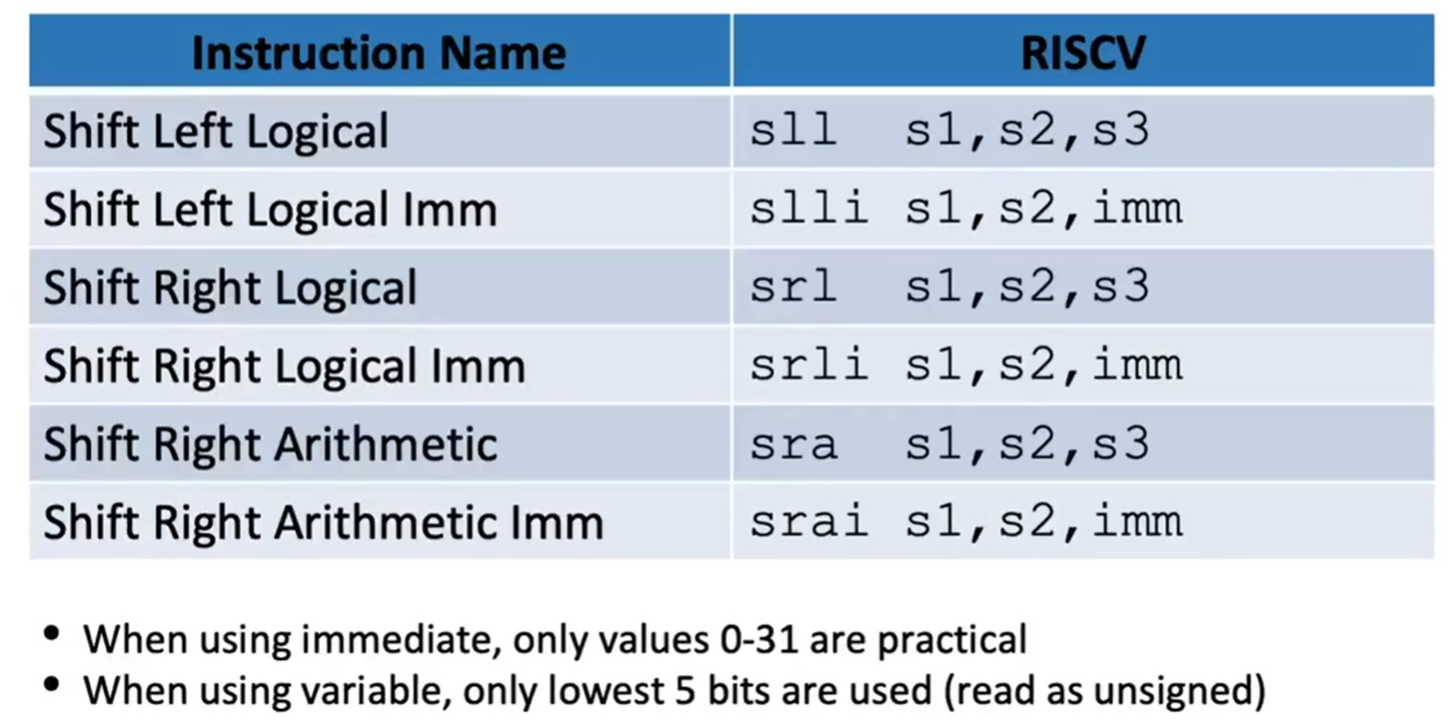
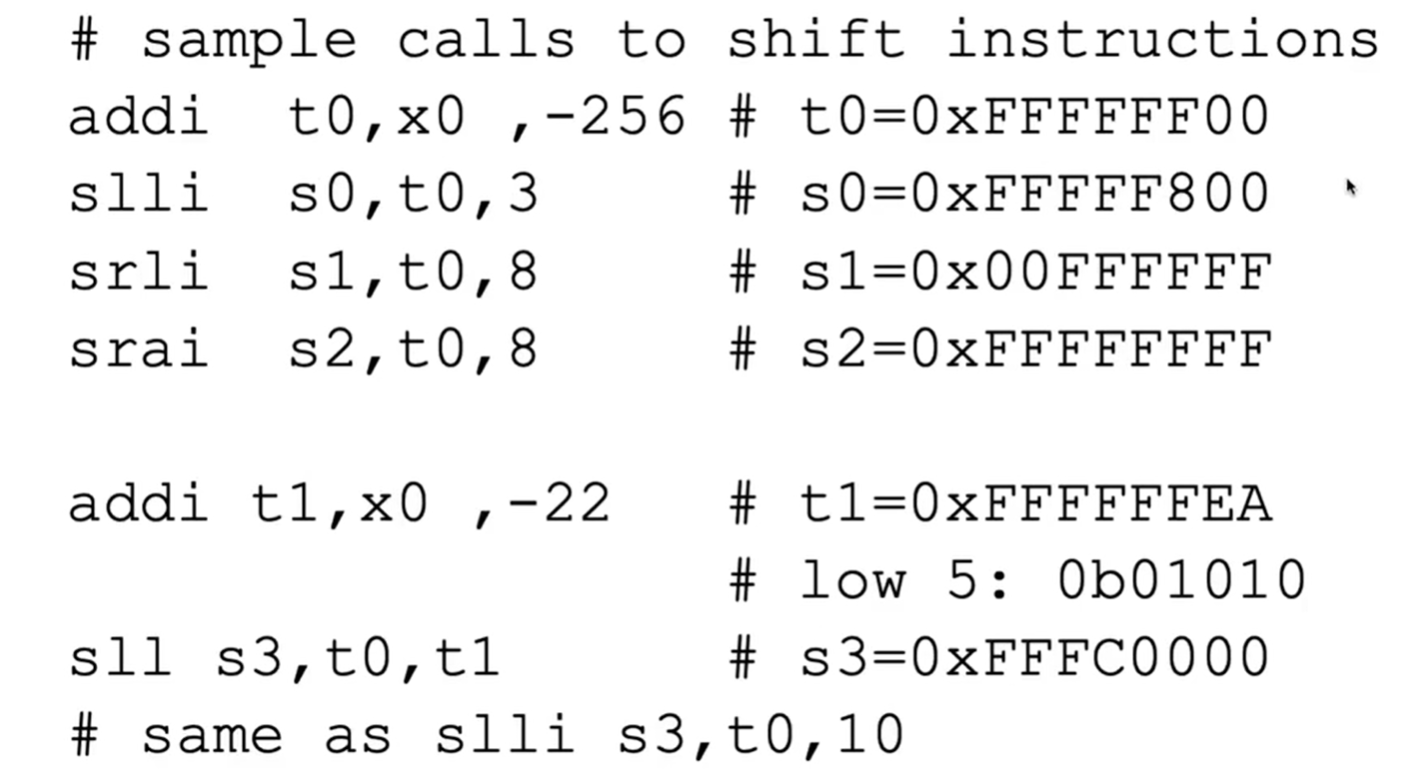
以下代码将 s1 的值存储到 s0 地址的第4个字节(最高字节)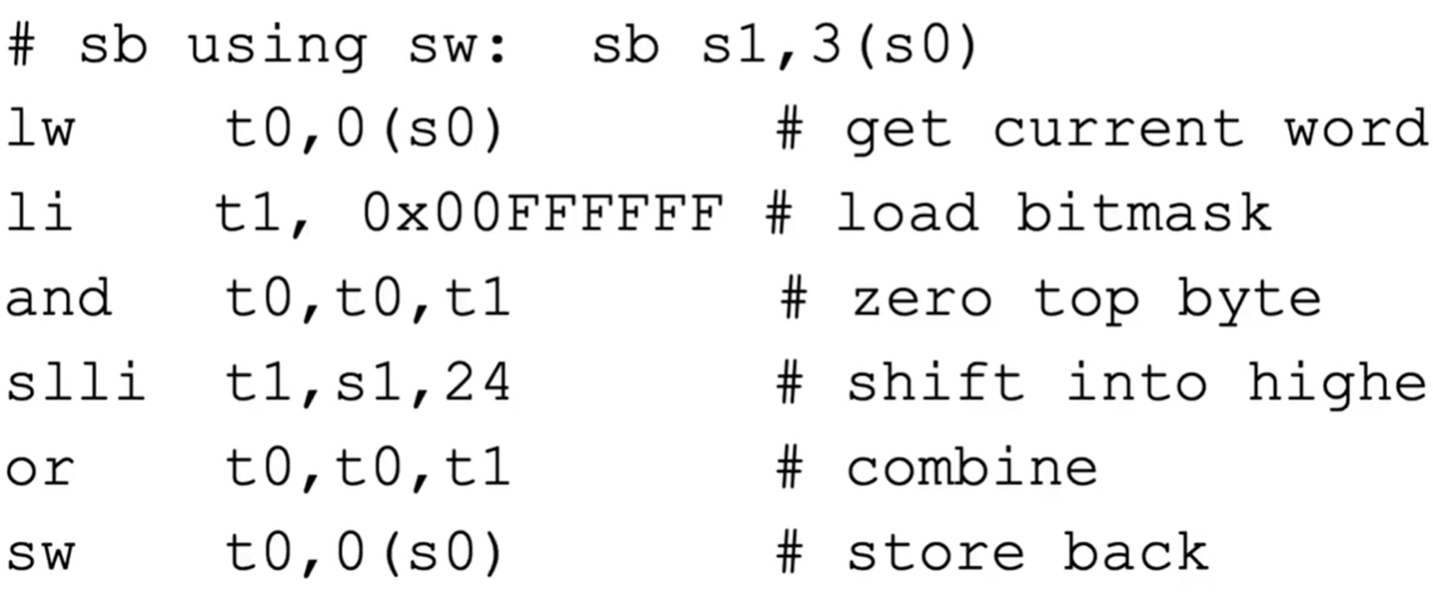
假设 s0: 0x12345678。s1: 0xAB
lw t0, 0(s0) 从 s0 地址读取当前值 0x12345678 到寄存器 t0,t0 = ‘0x12345678’。
li t1, 0x00FFFFFF 将立即数 0x00FFFFFF 加载到寄存器 t1。t1 = 0x00FFFFFF。
and t0, t0, t1 将 t0 与 t1 按位与,清除 t0 的最高字节。t0 = ‘0x12345678’ & ‘0x00FFFFFF’,最终 t0 = ‘0x00345678’(最高字节已经清零)
slli t1, s1, 24 将 s1 的值左移 24 位,将其移动到最高字节位置,也就是 0xAB << 24 -> t1 = 0xAB000000
or t0, t0, t1 将 t0 和 t1 按位或操作,合并新的最高字节。t0 = 0x00345678 | 0xAB000000,t0 = ‘0xAB345678’
sw t0, 0(s0) 将 t0 的值 0xAB345678 存储回 s0 地址,s0 = 0xAB345678
Arithmetic Instructions Myltiply Extension
Multiplication(mul and mulh)
$src1 \times src2$:lower 32-bits through mul, upper 32-bits in mulh
1 | mul dst, src1, src2 |
Division(div)
src1 / src2: quotient via div, remainder via rem
1 | div dst, src1, src2 |
Bitwise Instructions
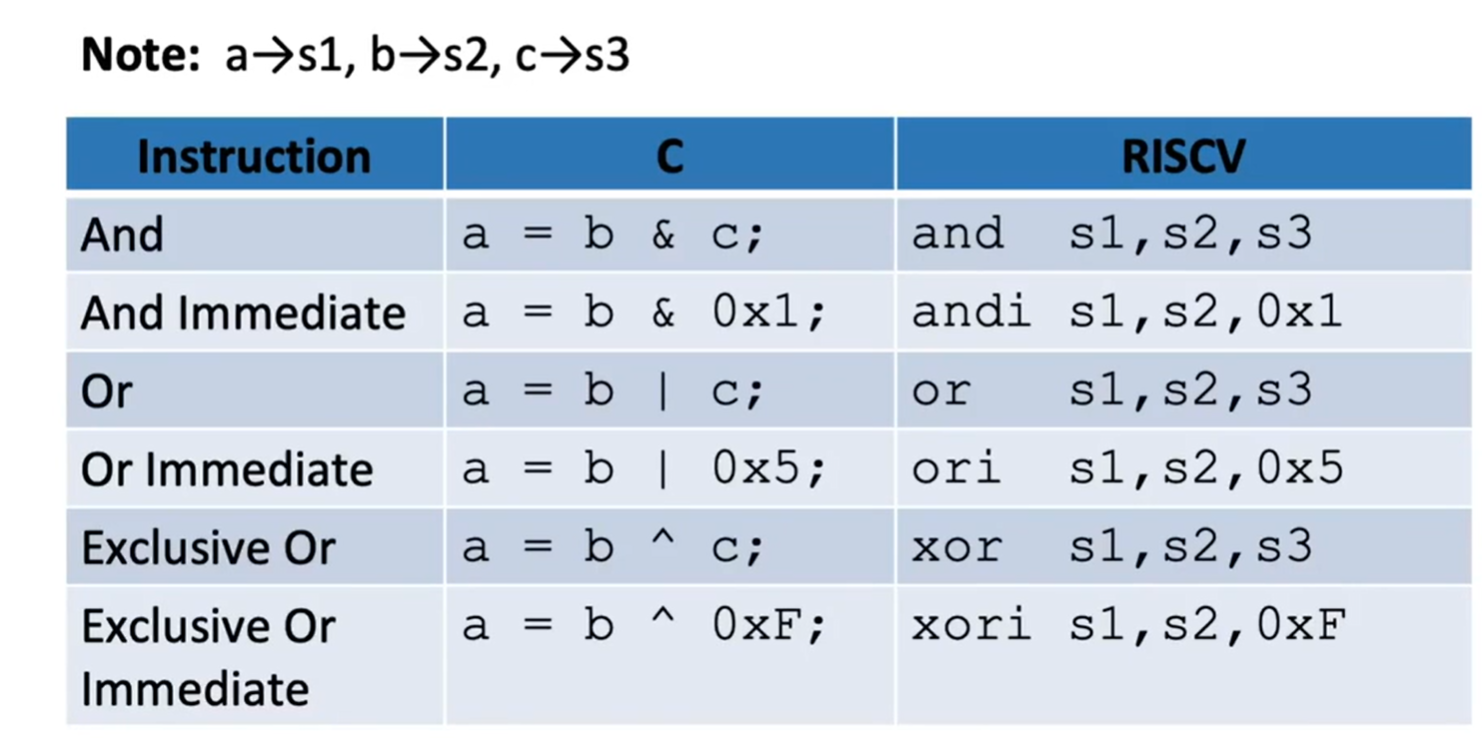
Compare Instructions
Set Less Than (slt)
If value in reg1 < value in reg2, dst = 1, else 0
1 | slt dst, reg1, reg2 |
Set Less Than Immediate (slti)
If value in reg1 < imm, dst = 1, else 0
1 | slti dst, reg1, imm |



